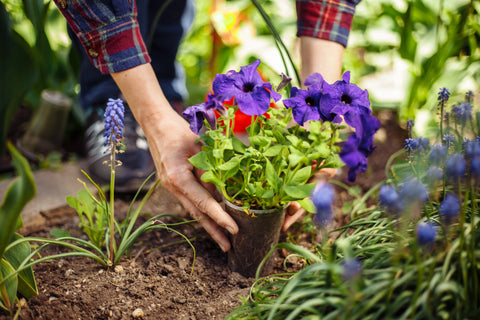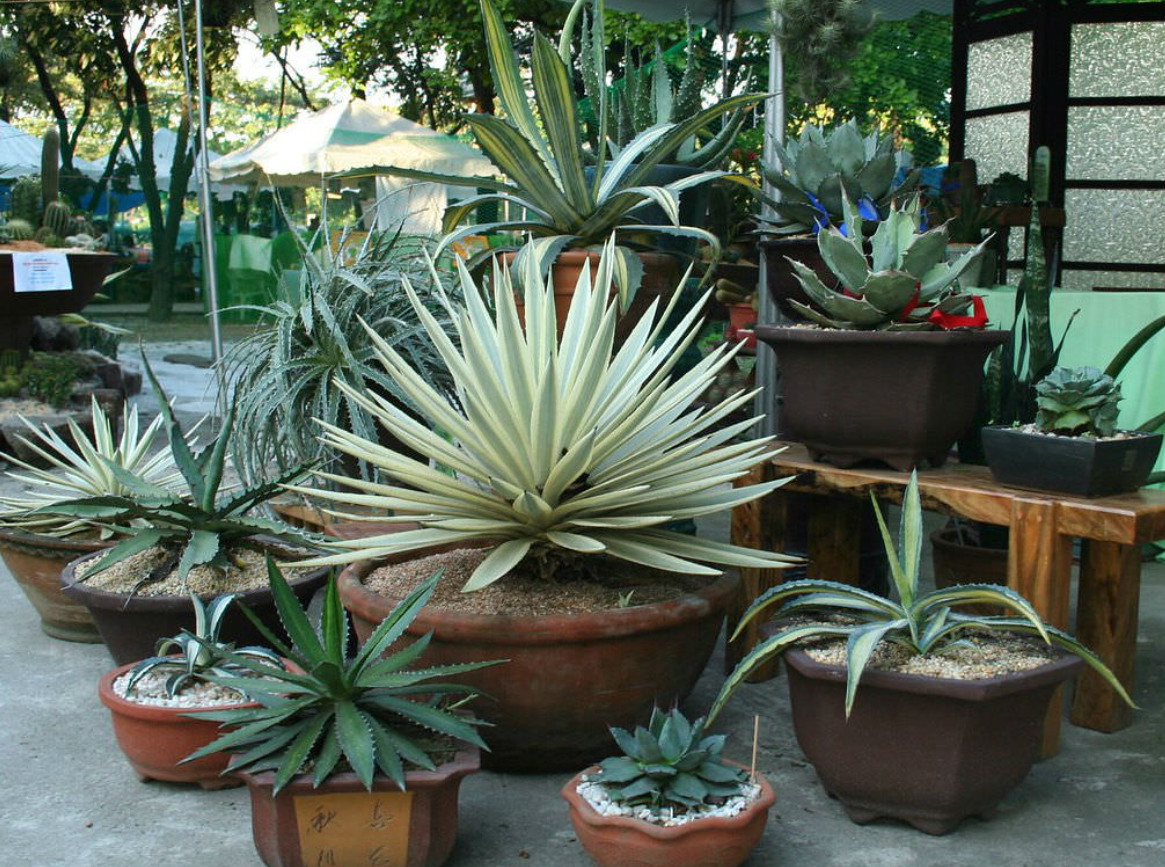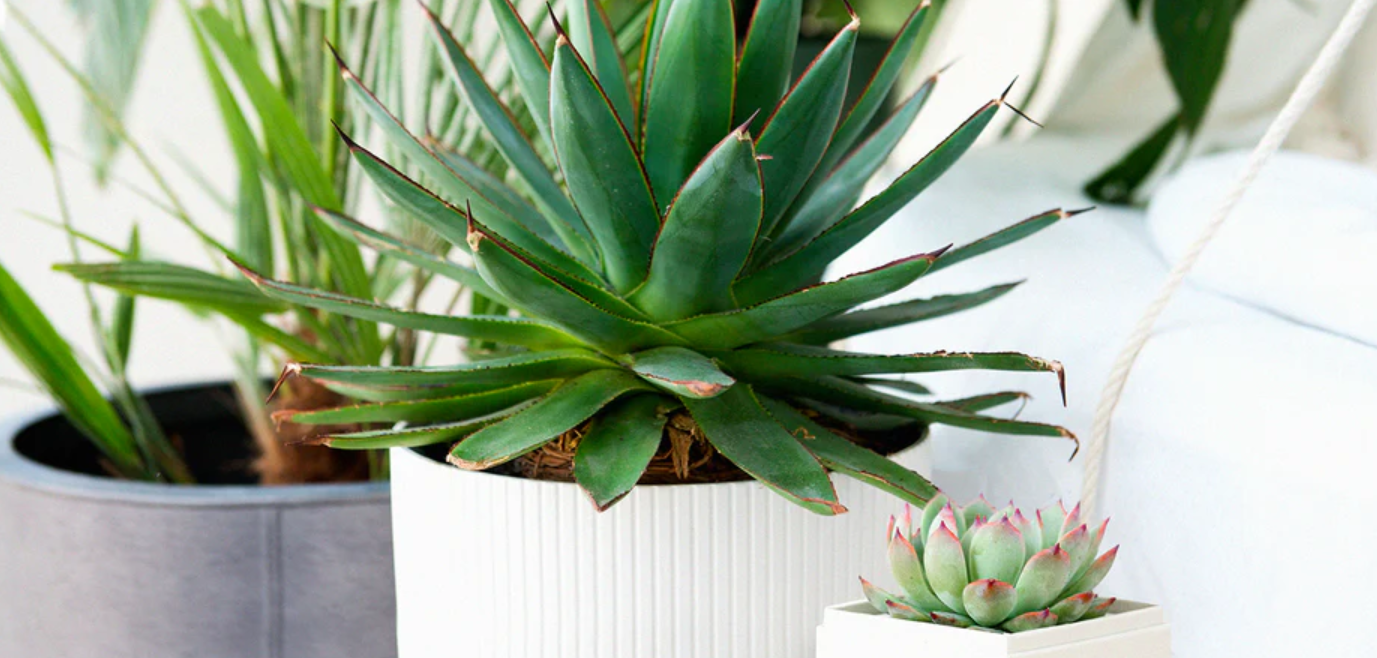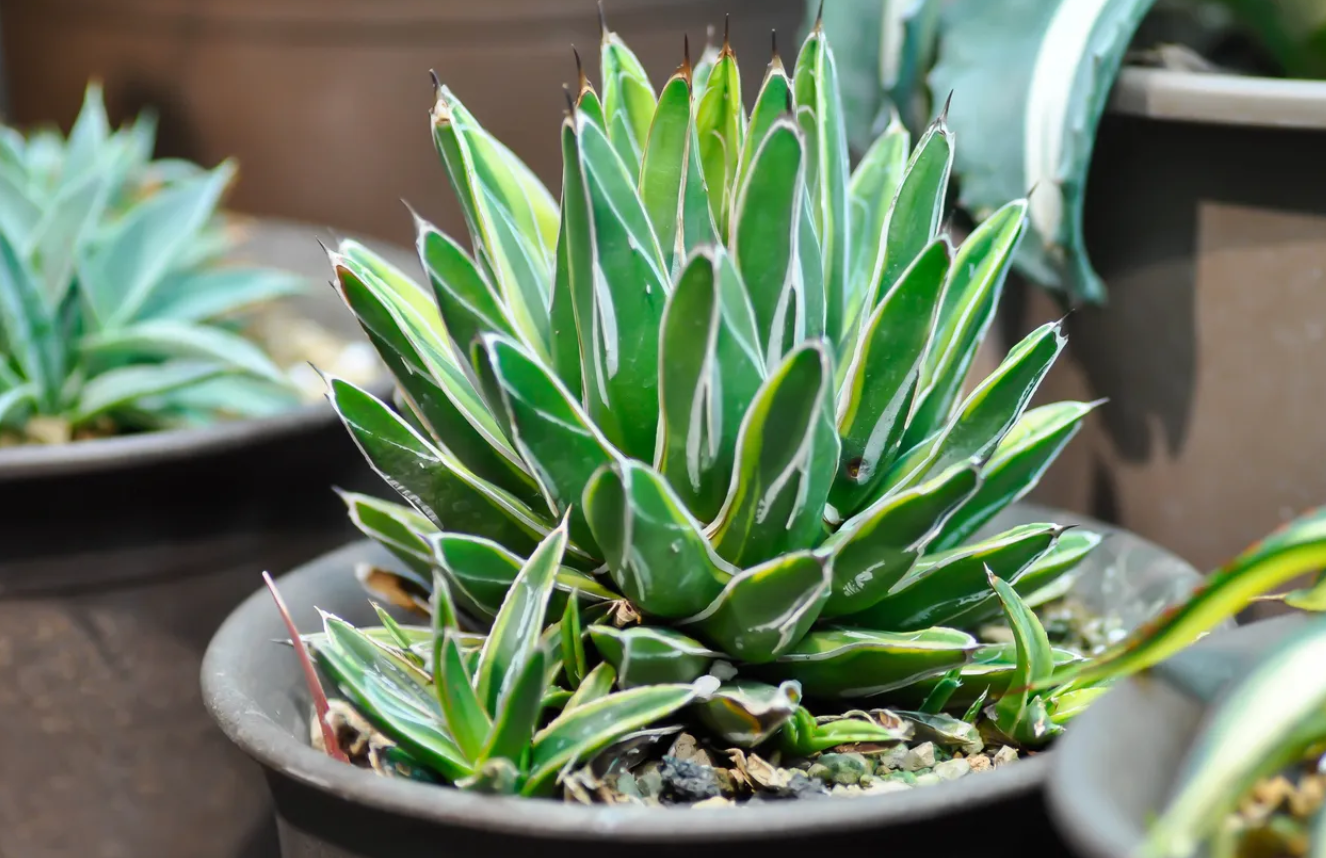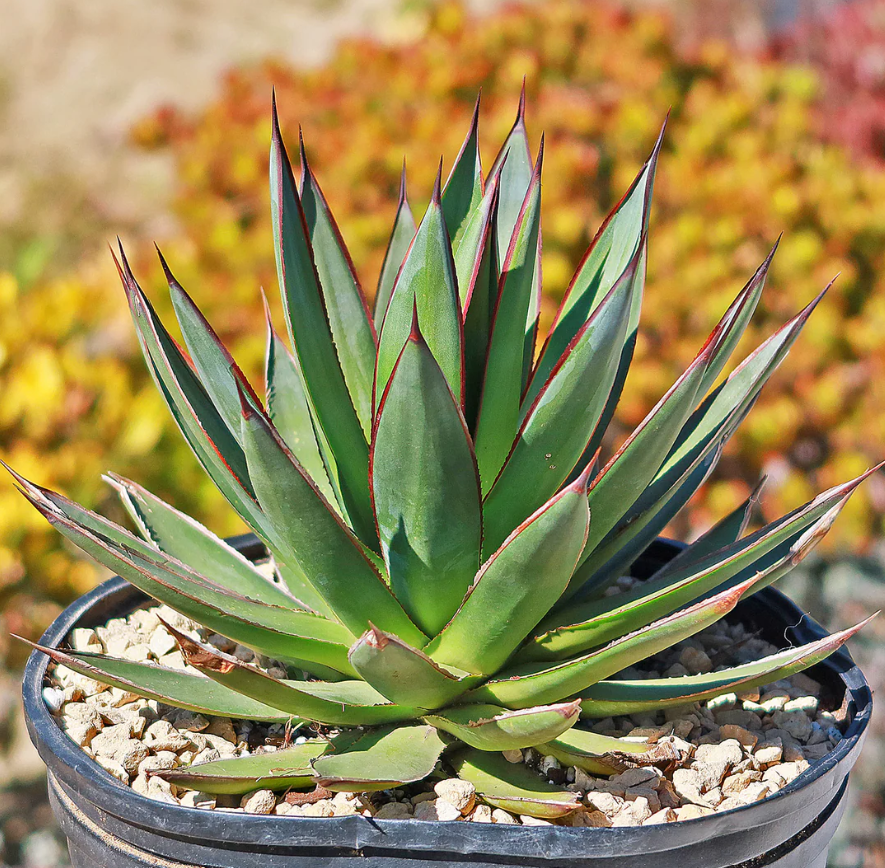Types of Agaves
Here are some common agave categories:
- Agave Americana is characterized by a large, dramatic rosette of thick, blue-green leaves. It is a slow-growing species that eventually flowers once in its lifetime with a tall flower stalk.
- Agave Angustifolia grows in the Caribbean and boasts narrow, long leaves that have spiny edges. It is primarily used for its ornamental value and is the base for mezcal spirit.
- Agave Geminiflora is characterized by a unique flower stalk that bears multiple, narrow flower clusters that look like twin flowers. This species is more fragile and has long, thin leaves.
- Agave Americana Variegata is a variegated variety of the Agave Americana. It has gorgeous, bright yellow-edged leaves, making it a favorite ornamental plant in gardens and landscapes.
- Agave Parryi is a compact agave species with symmetrical rosette form. It is used for xeriscaping as it can tolerate dry conditions and its pale blue-green leaves are unique. J.C. Raulston is a cultivar of Agave Parryi, named after an eminent horticulturist. It has thick, rough leaves and a strong, balanced shape.


